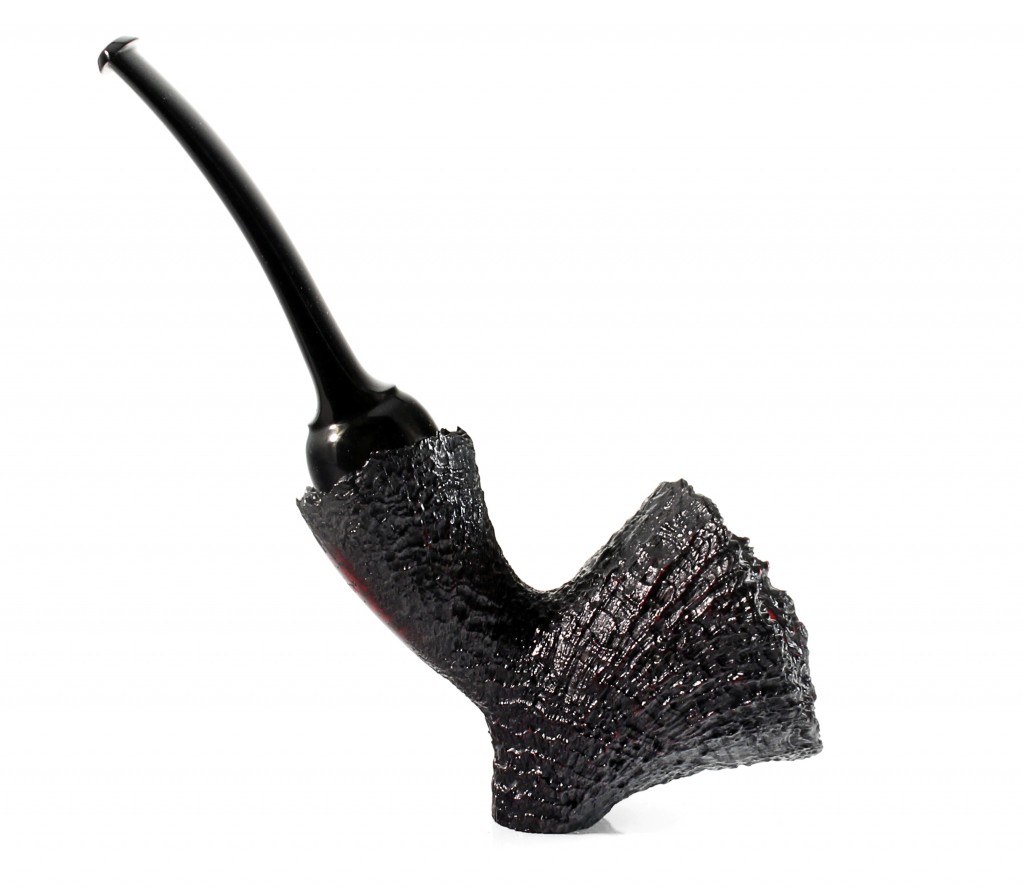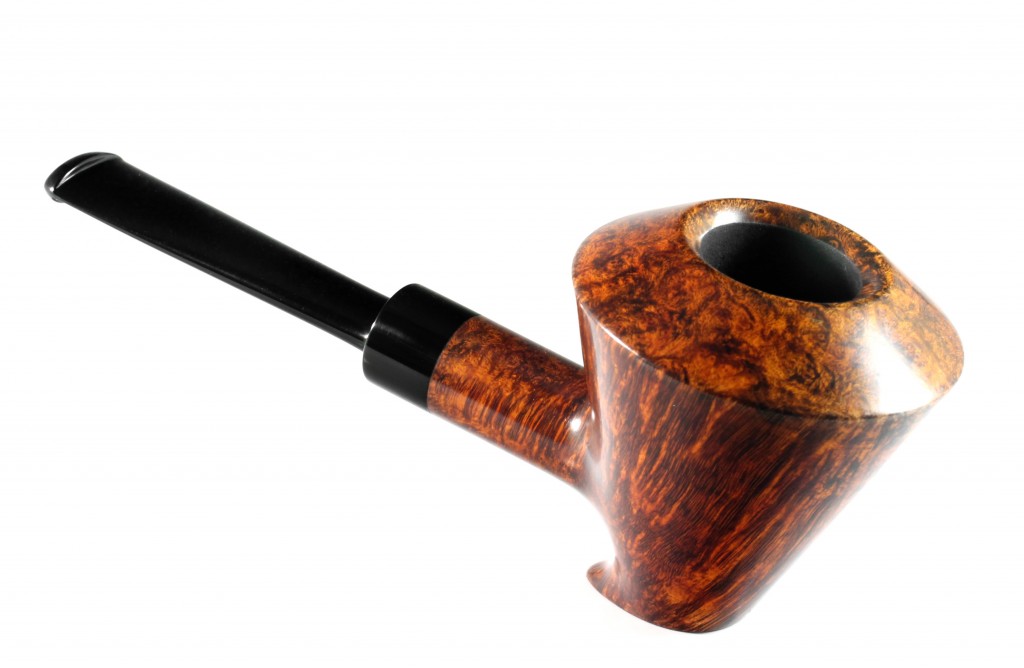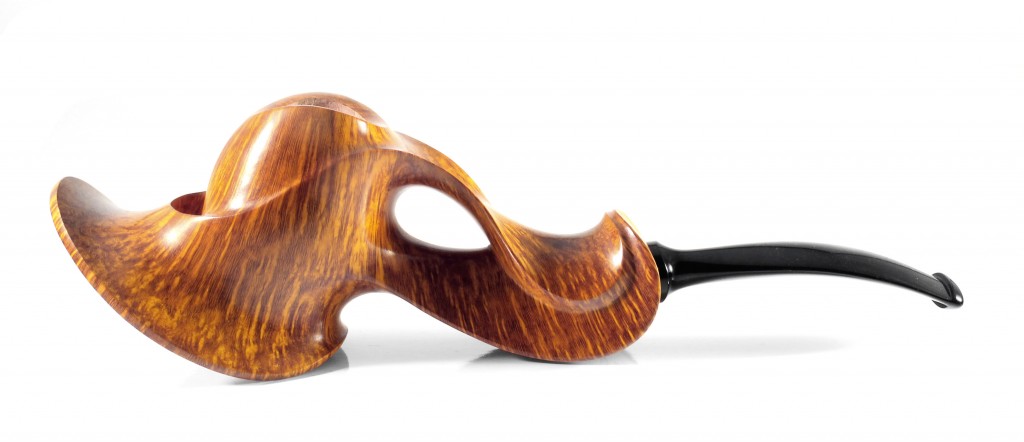As pipe collectors, just like in the rest of our existence, we go through phases. Some last longer that others and are thus entitled “collecting focuses”, but this is just a euphemism. Very few collection focuses last throughout one’s entire pipe career and with good cause. To me, it would be a dull experience to collect the exact same thing and only that thing for one’s entire lifetime. Please don’t get me wrong: having a focus = good. But there are few people who never diversify their collection beyond one focus. By diversifying your passion and focusing on new aspects of the pipe hobby, your scope widens and you are better able to appreciate all facets of this complex obsession.
One of my current phases developed without my even knowing it, like they tend to do. Of the last ten pipes that I have added to my collection in recent months, seven of them have been what are known as sitters.
 A sitter is not a shape, really, but rather a characteristic of the shaping of the pipe. As near as I can tell, the best definition for a sitter is a pipe that has a flat portion on the bottom that allows it to stand independently in a upright position without the mouthpiece touching the surface on which it is sitting. That last part is important, as it is the entire point of a sitter; it is able to be set down without the use of a pipe stand and without the button getting dirty. If the button touches the table the pipe is sitting on, it’s not a sitter, it’s just a pipe that hasn’t fallen onto its side.
A sitter is not a shape, really, but rather a characteristic of the shaping of the pipe. As near as I can tell, the best definition for a sitter is a pipe that has a flat portion on the bottom that allows it to stand independently in a upright position without the mouthpiece touching the surface on which it is sitting. That last part is important, as it is the entire point of a sitter; it is able to be set down without the use of a pipe stand and without the button getting dirty. If the button touches the table the pipe is sitting on, it’s not a sitter, it’s just a pipe that hasn’t fallen onto its side.
There are two shapes, as far as I can tell, that have being a sitter built into their shape: the poker and the tankard, which is essentially a churchwarden version of a poker. Many shapes, however, with the creativity of a talented artisan, can be made to be a sitter.
Whenever I notice myself falling into another “focus”, I ask myself why. Why this? Why do I like it?
Being a sitter allows the pipe to be an autonomous piece of art and yet be fully functional. For displaying purposes, most pipes require a stand of some sort, whether it be a pipe rack or a single seat. Sitters, however, do not. They can be displayed anywhere, which is something that I have truly come to appreciate as I have been designing my new office and pipe room. Most of my pipes are constrained to the confines of wherever I can fit a pipe rack. My beautiful sitters, however, are able to grace my desk and bookshelves and anywhere else that I can think of.
Does any of this add to the smoking quality of the sitter? No. Then again, neither does the grain. I like sitters in my capacity as a pipe collector, not a pipe smoker.
Also from an artistic perspective, I like the challenge that creating a beautiful and functional sitter poses to the artisan. Oh, sure, it’s easy to make a pipe that can sit on it’s own: just make a poker. But that’s not the challenge. The challenge it to simultaneously get the most out of the block and the shape and to successfully balance the pipe perfectly, both on the X and Y axis, to allow it to stand.
Another construction challenge involves creating a base wide enough to allow the pipe to weather the surface moving slightly beneath it without it tumbling over. After all, there’s no point in having a sitter that collapses every time a mouse walks by the shelf on which it stands. This has to be accomplished without make the pipe look bulky or bottom heavy.
 As a consequence of this added challenge, there are often unique and beautiful creations that would never have been thought of otherwise. Everyone knows the saying that competition breeds excellence. In this case, the artisan is competing against gravity and the grain. What might have originally been a run-of-the-mill Dublin becomes an eye-catching and phenomenal piece, as can be seen by looking at this piece by Jonas Rosengren, a Speeding Dublin Sitter.
As a consequence of this added challenge, there are often unique and beautiful creations that would never have been thought of otherwise. Everyone knows the saying that competition breeds excellence. In this case, the artisan is competing against gravity and the grain. What might have originally been a run-of-the-mill Dublin becomes an eye-catching and phenomenal piece, as can be seen by looking at this piece by Jonas Rosengren, a Speeding Dublin Sitter.
In general, creating a sitter makes the process of creating pipe a beautiful combination of math and art, even more than it usually is.
As a rule, designing a pipe is already highly mathematical. When you add in the complication of making the pipe sit independently, it heightens the experience and adds in many factors, such as balance on two axes. Also, the angle of the stem and cant of the bowl no longer simply concern shaping and smoking qualities, but also have to do with the balance of the pipe, while still having to be comfortable and functional.
I like it when an artisan deliberately challenges himself. Being content with one’s work leads to atrophy, while turning the volume up to 11, so to speak, leads to incredible work such as those pictured throughout this piece. After all, looking as these beautiful specimens, who could argue with the attractiveness of a well-executed sitter?
Cheers, friends!
P.S. If you know why the title of this piece made me think of one of my favorite SNL episodes, you get a cookie.


